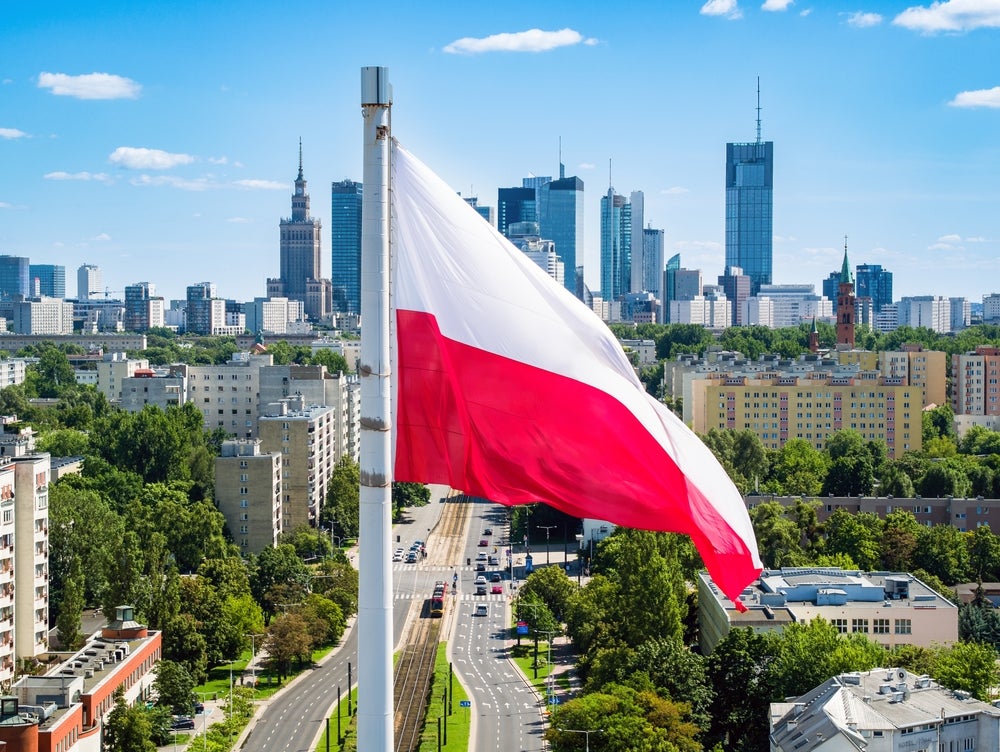
Poland’s leasing industry continues to expand at a strong pace, bolstered by high demand for asset financing, the rise of green investments, and innovative service models. With leasing penetration rates among the highest in Europe, the sector plays a key role in supporting small and medium-sized enterprises (SMEs) and the country’s wider economy. Despite economic uncertainty in Europe, Poland’s leasing market remains resilient, with double-digit growth projections for 2025 and increasing interest in sustainable and flexible financing solutions.
Poland is now recognised as a “highly developed market” as far as leasing is concerned, says Monika Constant, president of the representative body for the sector, Związek Polskiego Leasingu (ZPL, the Polish Leasing Association), with transport, trade, processing and construction the key sectors, according to contract shares and financed asset values.

Access deeper industry intelligence
Experience unmatched clarity with a single platform that combines unique data, AI, and human expertise.
Compared to other European countries, leasing in Poland “is an exceptionally popular service,” she exudes, noting that the leasing penetration rate in the movable asset market is the highest in Europe, at 45% in 2023, compared to a European average of 28%. In Poland’s manufacturing sector, leasing as the preferred external source of financing accounts for 45% of all investments, ahead of all other forms of financing, including credit (36%). In construction, it accounted for 64%, with credit just 29%.
According to Milena Wedereit, managing director of sales at Grenke Poland, Poland has built up several defining characteristics of its leasing sector. It ranks fifth in Europe in terms of the value of assets financed through leasing, it is the fastest growing in the EU, with a sixfold expansion over the past 18 years, and it finances almost 30% of investment spending in Poland’s rapidly expanding economy.
A robust and dynamic market achieved strong volume growth in 2024, according to the European Federation of Leasing Company Associations (“Leaseurope”), the umbrella body that brings together 46 national associations throughout Europe. In what would seem total disregard for the doorstep crisis in Ukraine, and Germany’s economic frailties, Poland enjoyed one of the fastest expansions of any leasing sector in 2024, alongside Belgium, Croatia, Greece, Latvia and Turkey, buttressed by a comparatively strong economy.
Supported by real wage growth, fiscal policy expansion, and low unemployment boosting domestic demand, GDP increased by 2.9% in real terms in 2024, despite weak export growth. After flatlining in 2023, the rebound in economic activity was ably assisted by price inflation moderating substantially from its double-digit rates in 2022-2023.

US Tariffs are shifting - will you react or anticipate?
Don’t let policy changes catch you off guard. Stay proactive with real-time data and expert analysis.
By GlobalDataThese favourable leasing market metrics have extended the trend of double-digit growth going back several years, which adds up to impressive contract volume. According to Poland Weekly, the total value of investments financed by leasing in the past three decades has now reached PLN 1 trillion (£200 billion).
The outlook is equally positive, according to those with expert knowledge of the industry. According to Grenke’s Wedereit, in 2025 the Polish leasing market is expected to continue to grow at an annual average rate of more than 10%. The ZPL is similarly bullish, with its expectation of 13% volume growth, to PLN125 billion of business for the year.
The economy will invariably play its part again. Poland is likely to see stronger real terms GDP growth of 3.4% this year, according to the Organisation for Economic Cooperation and Development’s (OECD’s) latest forecasts, published in December. This is in line with other forecasters, including the European Commission, with some private sector economists even foreseeing growth of 4%, perhaps slightly more this year, and an unemployment rate below 3%.
Gross fixed capital formation (i.e. investment spending), is seen accelerating to 9.5%, according to the OECD, underpinned by the National Recovery and Resilience Plan and the European Green Deal (focused on the green transition) as well as the 2021-2027 EU long term budget and post-pandemic NextGenerationEU funds. These will underpin substantial financing opportunities for assets on a large scale.
There are also relatively strong assessments of the business climate in retail trade and services, those sectors that are strongly linked to consumer spending and the demand for light vehicles. The transport industry’s prospects are brightening too, despite the poor assessment of the current situation, with new industrial orders rebounding to signal industrial production growth.
Springboard for further expansion
The ZPL held its annual results conference at the end of January 2025, extolling the virtues of Poland’s leasing market against the backdrop of a rather mixed picture for Europe as a whole. At the conference, it quoted a total of PLN 110.5 billion worth of lessors financed assets, compared with PLN 100.1 billion in 2023, a rise in volume of 10.4% year-on-year (y/y).
This stable double-digit growth was led by light vehicles (passenger cars and vans of up to 3.5 tonnes in weight), agricultural machinery and various types of equipment. Light vehicle financing is benefiting from the fact there are no longer problems with the timely production and delivery of new cars. Sales volume is almost back up to pre-Covid levels, with 551,500 passenger car sales reported, the highest in five years, supported by discounts from dealers and manufacturers.
By contrast, the financing of heavy vehicles has been in decline. This highlights a difficult financing situation for transport companies (albeit not buses), exacerbated by the industrial recession in the eurozone and Poland’s weakened export growth, with financing for trailers and semi-trailers down sharply (by 22%). Tractor-trailer financing also fell in 2024 (by 25%), with agricultural machinery financing down by 2%, contrasting with construction equipment financing rising by 22%.
Of the total volume, in 2024, some 54.7% comprised light vehicles, trucks accounted for 17.1%, and 23.7% was machinery and equipment, with micro- and small-sized companies and entrepreneurs (i.e. those with a turnover of up to PLN 20 million) notable for being the key recipients of leasing contracts. Compared to the European average, Poland’s financing structure has a higher share of machinery and equipment and commercial vehicles, including heavy transport. It is approximately 10% higher in those segments.
SMEs in Poland represent the main group of businesses for lessors. These businesses generate almost 50% of Poland’s GDP, and their share of the leasing sector is rising, with the demand met by a diverse range of providers. The banks have been traditionally important players, but as in other countries specialised leasing companies have become increasingly important as financing partners.
Comparing 2023 with 2024, the portfolio of leasing companies has grown from 49% to 55% of companies with the lowest turnover (up to PLN 5 million), mainly as a result of a falling share of the largest companies (by 4pp to 25%), highlighting their differing financing needs. As in other countries, Polish companies and entrepreneurs weigh up their decision to lease assets based on the competitivity and ability to negotiate pricing, the tax efficiency, flexibility of the product, and the quality of customer service.
According to the European Commission’s Survey on Access to Finance of Enterprises (SAFE), leasing is the most important source of financing for some two-thirds of small and medium-sized enterprises (SMEs) in Poland, compared with bank credit (35%) and subsidies (39%). This is well above the EU average of 50%, and it also represents one of the highest figures for leasing throughout the EU, except for Finland (69%).
Lobbying for remote leasing
As with other sectors, government regulation invariably can have a huge impact on leasing incentives and drawbacks. A case in point is the new programme of subsidies for purchasing electric vehicles. Although this maintains the possibility of financing in the form of leasing, it excludes companies other than sole proprietorships from receiving the subsidies.
“This will lead to underutilisation of the programme’s funding, it undermines its purpose and it limits its impact on the electro-mobility market,” says Constant, who goes on to mention that leasing played a key role in the previous subsidy programme, with almost 70% of the total subsidy from that programme used by entrepreneurs through leasing.
This change, she argues, will have an impact on the development of electro-mobility in Poland. Nearly 90% of Battery Electric Vehicles (BEVs) currently on Polish roads were registered during the programme’s years, with as much as 80% of all-electric cars purchased in Poland by entrepreneurs, for whom leasing is the primary form of financing.
Both Constant and Wedereit also mention an impending change that will enable leasing agreements to be concluded in documentary form without the need for an electronic signature verified by a qualified certificate. This is something the industry has been lobbying for over several years and it will streamline the entire process related to a leasing agreement.
The inability to conclude leases remotely constitutes a legal barrier, the removal of which “could potentially boost the sector,” says Wedereit. The proposed changes envisage using electronic means, such as email or SMS, rather than in written form “under pain of nullity,” adds Constant.
Future is bright
It certainly seems hard to be anything other than optimistic about the prospects for further growth in Poland’s leasing market in 2025 and beyond. As Grenke’s Wedereit points out, in the current uncertain economic environment across Europe, Poland’s leasing sector is experiencing high demand. This is in no small part due to the flexibility provided by contracts that are increasingly acknowledged to be more than simple alternative financing solutions, containing additional features such as integrated service packages or maintenance.
Flexible leasing terms offer new options for long-term use. Combined with services to extend the useful life of capital goods, the result is a comprehensive approach to conserving resources and reducing costs. “This is particularly attractive for SMEs and the self-employed, our main target groups,” says Wedereit.
Similarly to other countries, companies are investing in digitalisation and sustainability and “leasing is seen as a particularly advantageous solution in these areas,” she says, adding that leasing solutions can be important growth drivers for companies, with expenses spread over the year, preserving a company’s debt capacity.
There are many challenges of course facing the industry, with Constant pointing to regulatory barriers preventing full digitisation of sales, including having to register vehicles with the authorities, as well as the requirement for a qualified signature when concluding agreements. There are legal barriers too in the form of restrictions on the use of subsidies when financing investments by leasing, the Consumer Law, and an ambiguous approach to the qualification of assets, with the lack of precise standardisation. She also notes the lack of full understanding by customers of the characteristics of leasing, especially when comparing it to alternative forms of financing such as credit.
“The leasing sector is facing challenges of several progressive trends that are forcing leasing companies to make significant adjustments,” says Constant. These include environmental, social and governance requirements, with vehicle electrification, the energy transition, decarbonisation, the closed-loop economy, and programmes to support the ESG transformation principle among them.
Grenke’s Wedereit concurs. The energy transition is one of the key factors for Poland’s leasing industry strategy, along with ESG and the creation of general ecosystems for the most convenient set of services for end-users,” she says.
Companies are having to change their business models, with a shift in their approach to customer service going beyond simply providing financing to the customer, with an “ecosystem of ancillary services,” says Constant, such as building an asset-purchasing platform, and changing the role of the leasing company from financing assets to fully managing them. She cites examples of leasing companies from banking groups creating marketplaces and expanding the range of additional non-financial services.
Of course, there is also the rapid pace of digitisation that is opening up new opportunities in leasing, “notably from the perspective of improving the customer’s path and experience,” she says, as well as product innovation with mobility-as-a-service, or product-as-a-service based on subscription models. These are unlikely to revolutionise the market at this point, she says, but they are growing rapidly and have great development potential.
The goal of mobility-as-a-service is to facilitate access to various types of transport (including buses, city bikes, and car-sharing) and improve urban mobility. The platform allows users to plan trips, book tickets and make payments for transport services. It encourages environmentally friendly modes of transport and its popularity is growing in Europe, creating new leasing opportunities.
In this respect, Poland is dealing with the same challenges as the leasing sectors in other countries. With such a dynamic sector though, it seems as if it is well advanced to cope well with these challenges, adapting and growing in equal measure.







